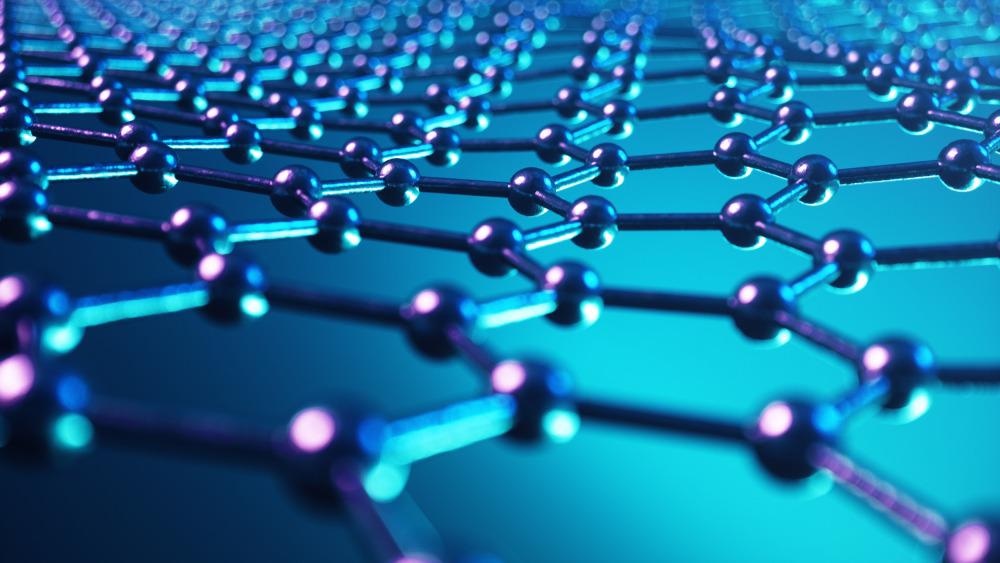The present study reported in the journal ACS Nano details the possibility of precise synthesis of graphene nanoribbon topological quantum dots. The synthesis procedure is reproducible and the properties could be predetermined, opening wide doors for the development of futuristic nanoelectronics.

Study: Rationally Designed Topological Quantum Dots in Bottom-Up Graphene Nanoribbons. Image Credit: Rost9/Shutterstock.com
Graphene nanoribbons are strips of single-layered graphene with narrow lengths. Graphene nanoribbons have shown attractive physical, chemical, electronic, and mechanical properties compared to other nanomaterials in the graphene family.
High carrier mobility properties and sizable bandgap make them suitable for various electronic applications.
Realization of Graphene Nanoribbons Through Bottom-up Approach:
Bottom up growth of graphene nanoribbons has given space for the realization of many other nanoribbon structures with a wide-range of electronic and optical properties. These diverse properties are due to the rational design of precursors, which leads to variations in widths, structures and dopants.
Quantum dots exhibit properties dependent on the size and shape of the constituent graphene nanoribbon, which can be created through graphene nanoribbon heterostructures. The properties of the quantum dots mainly depend on the randomly connected segments of arbitrary length.
On the other hand, deterministic graphene nanoribbon quantum dots can be created through hierarchical growth and sterically enforced selective copolymerization.
Recent discoveries of different topological phases of graphene nanoribbons and the development of experimental as well as theoretical engineering has led to the design and fabrication of graphene nanoribbons based electronic structures.
Dependence of Properties of Graphene Nanoribbons:
All periodic graphene nanoribbon structure possesses topological classifications that are classified based on the terminating unit cell and associated symmetries.
As per the bulk boundary correspondence principle, the interface between two graphene nanoribbons having different topological invariants will host a topological zero mode. This is a protected state that lies at or near to midgap in the energy band and could be related to localized spin under certain conditions.
Does the Topological Zero Modes Be Hybridized Contollably?
Neighboring zero modes, if created and hybridized controllably, could lead to a viable strategy where small gap semiconductor and metallic graphene nanoribbons could be realized.
Furthermore, these isolated topological zero mode bands should provide a basis for realizing topological quantum dots embedded in extended graphene nanoribbon structures, which have high applications in tunneling field effect transistors.
In the present study, researchers reported the growth and electronic characterization of graphene nanoribbon quantum dots comprising a pair of topological zero mode states. These topological zero mode states appeared at the interface between seven and nine atom wide armchair graphene nanoribbons (7/9-AGNR).
The precursor used for 9-AGNR was specifically designed to viably copolymerize with the bifunctional linker into ordered nanostructures resulting in pristine 7- and 9-AGNR segments connected by defined interfaces.
In this study, a stepwise synthesis approach based on deposition of bifunctional linker with the monomer for either 7- or 9-AGNR on the gold surface under ultra-high vacuum conditions were established.
This method created reproducible heterojunctions that are separated by a fixed distance and ensures the creation of topological zero modes. These modes hybridize with the define AGNR segments whose electron hopping amplitude could be predetermined.
Significance of the Specific Synthetic Approach:
This approach of creation of topological quantum dots through reproducible methodologies possesses the same electronic structure in contrast to the graphene nanoribbon quantum dots created by nondeterministic approaches.
The characterization of the two varieties of graphene nanoribbon topological quantum dots through scanning tunneling microscopy and spectroscopy exhibited that the splitting of the zero mode in topological quantum dots depends on the width of the graphene nanoribbon segments.
First principle density function theory (DFT) and tight binding (TB) calculations provided additional information on the hopping and splitting of the wave function of the topological quantum dot states.
Future Perspectives of the Study:
The present study thus provides the groundwork for achieving the future magnetic spin centers, the coupling of which could be predetermined through similar synthetic approaches.
Zero-dimensional topological states in graphene nanoribbons also provide a platform for studying topological behavior and magnetism in nanostructures, further creating the opportunity for various nanoelectronic applications in sensors, transistors and qubits.
Reference
Daniel J. Rizzo, Jingwei Jiang, Dharati Joshi, Gregory Veber, Christopher Bronner, Rebecca A. Durr, Peter H. Jacobse, Ting Cao, Alin Kalayjian, Henry Rodriguez, Paul Butler, Ting Chen, Steven G. Louie, Felix R. Fischer, and Michael F. Crommie. (2021) Rationally Designed Topological Quantum Dots in Bottom-Up Graphene Nanoribbons. ACS Nano. Available at: https://pubs.acs.org/doi/10.1021/acsnano.1c09503
Further Reading
Wang, H., Wang, H.S., Ma, C., Chen, L., Jiang, C., Chen, C., Xie, X., Li, A.P. and Wang, X. (2021) Graphene nanoribbons for quantum electronics. Nature Reviews Physics, pp.1-12.Available at: https://doi.org/10.1038/s42254-021-00370-x.
Cai, J., Ruffieux, P., Jaafar, R., Bieri, M., Braun, T., Blankenburg, S., Muoth, M., Seitsonen, A.P., Saleh, M., Feng, X. and Müllen, K. (2010) Atomically precise bottom-up fabrication of graphene nanoribbons. Nature, 466 (7305), pp.470-473. Available at: https://doi.org/10.1038/nature09211.
Disclaimer: The views expressed here are those of the author expressed in their private capacity and do not necessarily represent the views of AZoM.com Limited T/A AZoNetwork the owner and operator of this website. This disclaimer forms part of the Terms and conditions of use of this website.